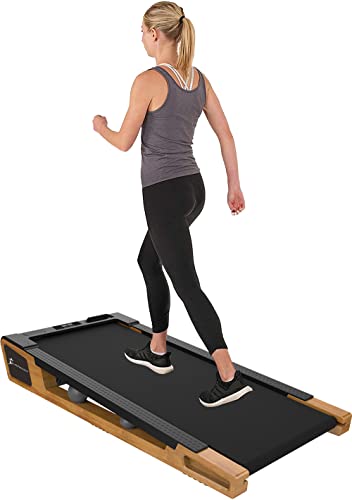Exploring the Benefits of Walking Pads: The Non-Electric Choice
In the era of modern-day physical fitness solutions, where technology reigns supreme and elegance is typically connected with electrical devices, a new pattern is emerging in practical exercise: the non-electric walking pad. These basic yet reliable pieces of devices are capturing the interest of fitness enthusiasts and casual walkers alike.
In this detailed guide, we will explore what walking pads are, their benefits, comparisons with standard treadmills, and supply responses to regularly asked questions.
What is a Walking Pad?
A walking pad is a compact exercise platform created mainly for walking, running, or light running. Unlike standard treadmills which count on electrical power, non-electric walking pads operate on a manual system. Users propel themselves forward by walking or running, harnessing their own body weight.
Key Features of Non-Electric Walking Pads:
- Compact Design: Most walking pads are lightweight and foldable, making them easy to store and transport.
- User Controlled: The speed and strength of the exercise depend upon the user's own effort.
- No Plug Required: Perfect for energy-conscious individuals, these pads require no power consumption.
- Quiet Operation: A quieter alternative to electric treadmills, making them ideal for homes or shared areas.
Advantages of Using Non-Electric Walking Pads
Utilizing a non-electric walking pad presents a variety of advantages. Below are some of the prominent advantages:
| Benefit | Description |
|---|---|
| Affordable | Non-electric models are usually more budget-friendly than their electric counterparts, making them available to a more comprehensive audience. |
| Improved Flexibility | Users can stroll or jog at their own speed, which is specifically helpful for beginners or those recuperating from injuries. |
| Space-Saving Design | Due to their compact size, walking pads fit easily in smaller sized spaces, making them ideal for home or office usage. |
| Low Maintenance | With no electrical elements, these pads need very little maintenance and are less likely to break down. |
| Ecologically Friendly | No electricity means no ecological impact from energy consumption, making them a terrific option for eco-conscious consumers. |
Comparing Non-Electric Walking Pads to Traditional Treadmills
| Function | Non-Electric Walking Pad | Traditional Treadmill |
|---|---|---|
| Power Source | Manual (user-powered) | Electric (plugged in) |
| Cost | Lower in advance cost | Higher preliminary investment |
| Size | Compact and portable | Larger, typically fixed |
| Noise Level | Very peaceful | Can be loud, depending upon motor and use |
| Personalization | Limited user settings | Comprehensive settings (speed, incline, programs) |
| Physical Engagement | Higher strength and effort needed | Much easier to use however may encourage less engagement |
How to Use a Non-Electric Walking Pad
Using a non-electric walking pad is uncomplicated. Here's a simple step-by-step guide:
- Set Up: Place the walking pad on a flat, steady surface.
- Adjust the Pad: Ensure that it is at a comfortable position for usage-- most pads have adjustable angles to customize the walking experience.
- Warm-Up: Before using the pad, carry out a short warm-up regimen, which can include mild stretching.
- Start Walking: Step onto the pad and begin walking at a moderate speed. As your speed boosts, you will notice the pad moving.
- Display Your Intensity: Pay attention to your heart rate and how you feel. Adjust your speed according to your fitness level.
- Cool Down: Gradually reduce your speed before stepping off the pad, followed by cooldown stretches.
Best Practices for Using Walking Pads
To maximize the advantages of non-electric walking pads, consider the following ideas:
- Incorporate Variety: Alternate in between walking and running for a full-body exercise.
- Engage Your Core: Maintain great posture by keeping your core engaged while using the pad.
- Hydration: Remember to hydrate before and after your exercise.
- Consistency: Aim to utilize the walking pad routinely. Start with 15-20 minutes and gradually increase the duration.
Often Asked Questions
1. How efficient are non-electric walking pads for weight loss?
Non-electric walking pads can be efficient for weight reduction when utilized consistently in conjunction with a healthy diet plan. Since they need more effort, they can allow higher calorie expenditure throughout workouts.
2. What is the weight capability of many walking pads?
A lot of non-electric walking pads can support individuals up to 250-300 pounds, depending upon the model. Always examine the maker's requirements for accurate info.
3. Exist any advised brands for walking pads?
Some popular brand names include InMovement, ProForm (manual designs), and ECHANFIT, each using a variety of features customized to varied user preferences.
4. Can non-electric walking pads be utilized outdoors?
These walking pads are generally developed for indoor use. Utilizing them outdoors might expose them to weather that could impact their toughness.
5. How do I store a walking pad?
Many non-electric walking pads are foldable. Simply fold them up and keep them in a closet, under a bed, or any practical area.
Non-electric walking pads offer a distinct and reliable aerobic workout choice that highlights simpleness and availability. By permitting users to produce their fitness routine without the limitations of power cables and complex interfaces, these pads empower people throughout numerous physical fitness levels.
For anybody searching for a budget friendly, space-saving, and reliable option to standard exercise equipment, exploring the world of non-electric walking pads might be the ideal next action in their physical fitness journey. By picking to buy among Manual Treadmill For Home , people can promote healthier routines while enjoying the empowering experience of motion on their own terms.

